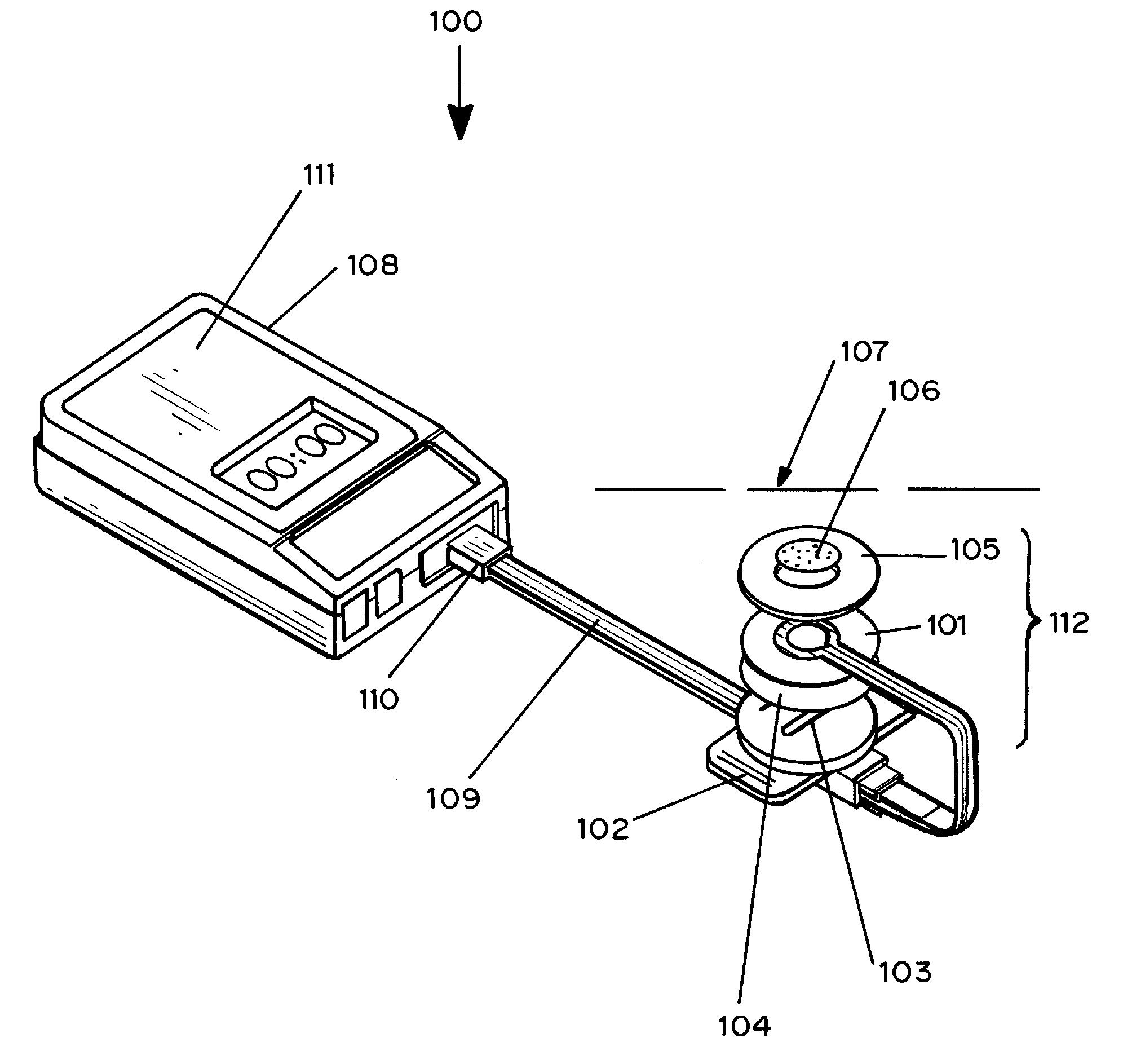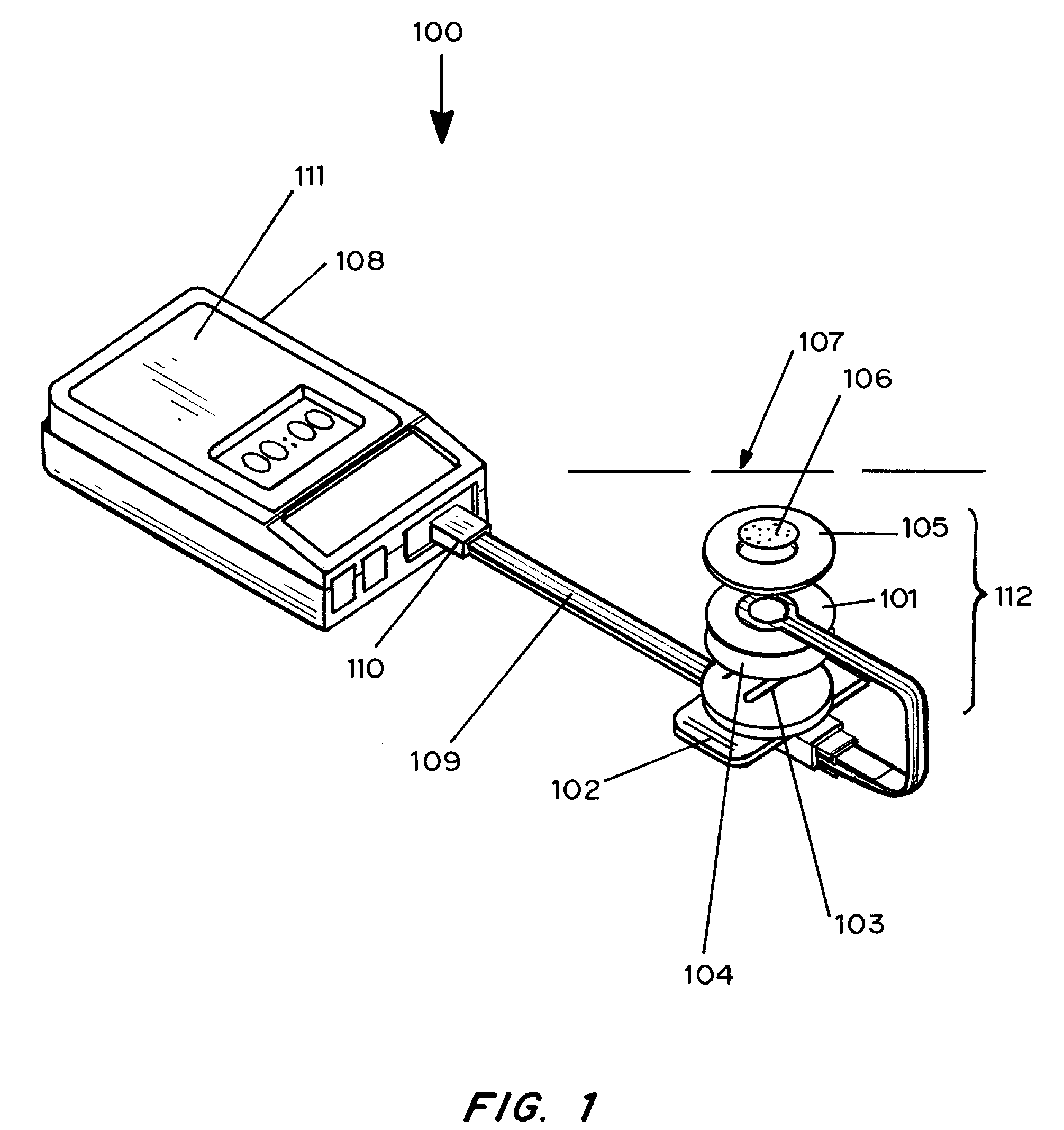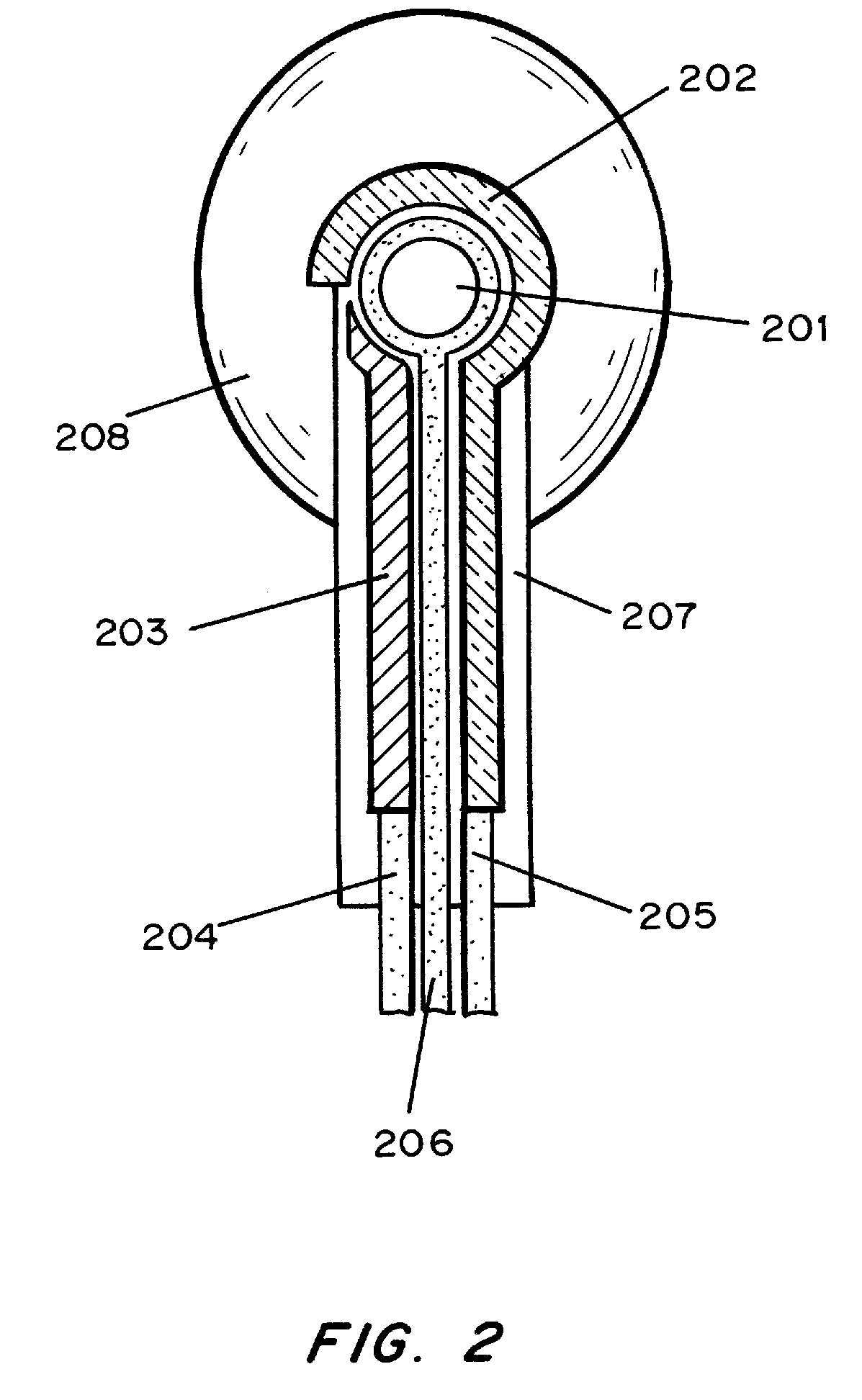Transdermal analyte monitoring systems and methods for analyte detection
a technology of transdermal analyte and monitoring system, applied in the field of biological fluid non-invasive sampling systems, can solve the problems of short shelf life of hydrogel sensor systems, inability to detect biofouling and/or contamination, and disadvantages of available systems, so as to reduce biofouling and/or contamination
- Summary
- Abstract
- Description
- Claims
- Application Information
AI Technical Summary
Benefits of technology
Problems solved by technology
Method used
Image
Examples
example 1
The Use of a Protective Semi-Permeable Membrane to Form a Hydrogel / Membrane Composite, and Improve TAMS Performance
[0117]The following membranes were tested: [a] Uncoated Polyether sulphone (PES): symmetric with pore sizes of 0.2, 1.2 and 5.0 μm; asymmetric with pore sizes of 0.3, 1.0 and 2.0 μm, [b] Nafion®-coated PES: each of the 6 different PES pore sizes listed above were also tested with a Nafion® coating, [c] Activated PES with aldehyde functional groups (with pores of 0.45 μm), [4] Amphoteric and cationic Nylon 66 (with pores of 0.2 μm), [d] Ultrafiltation membranes: Regenerated Cellulose (RC) with 3.5 k MW cutoff; PES with 10 k MW cutoff [e] Nafion 1135 sheet, with 35 nm ionic channels.
[0118]Formation of a hydrogel / membrane composite: the membrane was cut out as a disc, soaked in buffer and placed at the bottom of the polymerization mold; the scrim page was placed over the membrane; polymer solution was syringed into the mold cavity; the mold was exposed to UV light to form ...
example 2
The Inclusion of a Humectant in the Hydrogel Buffer to Mitigate Water Loss, and to Improve Device Performance
[0124]A series of experiments was conducted including various humectants in the hydrogel. Two categories of humectants were tested. The first category contained small-molecule humectants, generally natural moisturizing factors (NMFs), and the second category contained polysaccharides. The following small-molecule humectants were tested: glycerol, urea, hydroxyethyl urea, propylene glycol, sodium lactate (Na lactate) and sodium pyrrolidone carboxylic acid (Na PCA). The following polysaccharide humectants were tested: hyaluronic acid (sodium salt), carrageenan and agarose.
[0125]For the small-molecule humectants, each humectant was dissolved in the polymer solution before polymerization. The particular concentration of humectant in the polymer solution was also maintained in the hydrogel buffer. This prevented a humectant concentration gradient that could promote humectant diffu...
example 3
Covalent Immobilization of Glucose Oxidase (GOx) within a PEGDA Hydrogel
[0130]A series of experiments was conducted to establish a practical enzyme immobilization strategy. An acrylate-PEG-NHS (A-PEG-N) reagent (Nektar) was chosen as the linker or immobilization reagent. Parameters of concern included the ratio of immobilization reagent to enzyme, reaction sequence, and incubation time.
[0131]A pre-polymerization step for incubation of the acrylate-PEG-NHS (A-PEG-N) immobilization reagent to the enzyme was used. 3% GOx was dissolved in the polymerization buffer, and an excess of A-PEG-N at a molar ratio of 7 to 1 was added. A molar ratio of 7 to 1 was chosen to ensure conjugation, without interfering with enzyme activity. The solution was left to incubate overnight at 4° C. (a reaction time of 3 hours at room temperature was also effective). PEGDA was added per usual the next day to complete the polymer solution, followed by UV curing.
[0132]Evidence that the covalent immobilization w...
PUM
 Login to View More
Login to View More Abstract
Description
Claims
Application Information
 Login to View More
Login to View More - R&D
- Intellectual Property
- Life Sciences
- Materials
- Tech Scout
- Unparalleled Data Quality
- Higher Quality Content
- 60% Fewer Hallucinations
Browse by: Latest US Patents, China's latest patents, Technical Efficacy Thesaurus, Application Domain, Technology Topic, Popular Technical Reports.
© 2025 PatSnap. All rights reserved.Legal|Privacy policy|Modern Slavery Act Transparency Statement|Sitemap|About US| Contact US: help@patsnap.com



